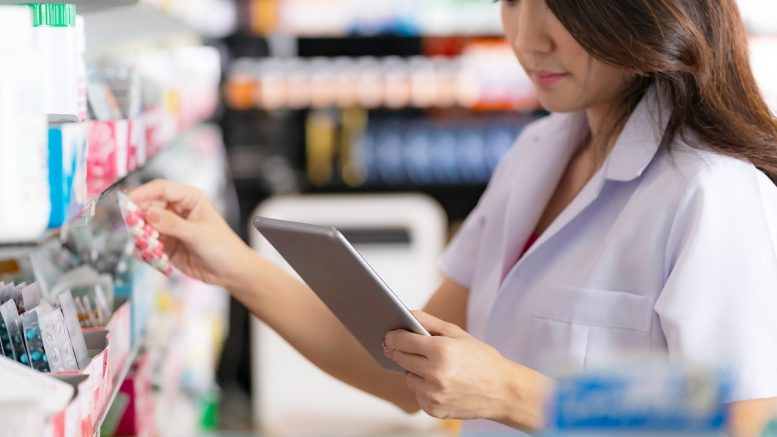The last 300 years have seen phenomenal evolution in our understanding of, and approach to managing human health and wellbeing. It’s fair to say that healthcare in the 2020s is completely unrecognisable from its 1720s predecessor. But it’s also fair to say that the pharmacy sector is often slower to embrace new ways of working and the opportunities offered by tech.
As we celebrate the passing of three centuries since the first pharmacies opened their doors, it’s an opportune moment to reflect on how – and why – these opportunities should be leveraged. As the cost of living crisis ramps up, it is now more important than ever that pharmacies – and the products and services they offer – evolve their operations and offerings to ensure that they are accessible and affordable. Innovation in both technology and policy can help us do that, by connecting the dots between GPs, healthcare providers, pharmacists and patients.
A brief history of pharmacy
The origins of pharmacy can be traced back to the very earliest civilisations. In Mesopotamia, in 2100 BC, the very first pharmaceutical texts were written on clay tablets and included instructions on pulverising, infusing, boiling, filtering, and spreading herbs, beer, tree bark, and wine. In ancient Greece, pharmacists were known as herbalists – supplying physicians with raw materials, including plants, to make medicines – and in China, the Shennong Ben Cao Jing (Classic of the Materia Medica), which dates back to the first century AD, was said to have contained 365 entries on herbs and the ailments they could treat.
For many thousands of years, the role of physicians and early pharmacists were one and the same. However, in 1240 AD King Frederick the Great delineated the roles and issued professional regulations for both. By the mid-16th century, pharmacists were working in the apothecaries that dotted the streets of European cities, preparing and dispensing herbs and other substances to the public for medicinal use.
Jump forward into the 20th century, when the mass-industrialisation of drug production gathered pace, and pharmacists became even more entrenched as pillars of community life and public health. But despite the centuries of change, the essential services offered by pharmacists today are not dissimilar from their earliest predecessors:
- Dispensing medicines and vaccinations
- Dispensing medical appliances
- Promotion of healthy lifestyles
- Disposal of unneeded medicines
- Signposting patients to appropriate treatments
- Support for self-care
Providing a vital service
Today, pharmacies on high streets, in supermarkets, and often in the heart of deprived communities, perform a vital service – with 1.6 million people accessing their services daily. They support thousands of people who cannot easily access other healthcare services, and provide a space for anyone to secure advice on sensitive health issues outside of the doctors consultation room.
With the NHS under immense pressure – waiting lists for treatment at an all-time high of 6.84 million, and the median waiting time for treatment of 13.3 weeks – this community-based provision is more vital than ever.
However, whilst pharmacy’s offering has evolved to include more patient-facing clinical services and better integration with wider healthcare services, transformation in the sector has been slow-moving, with huge regional variations in transformation of – and access to – pharmacy services. As a result, there is significant scope for how pharmacies operate and deliver services.
Digital transformation
Many core pharmacy processes in the UK rely heavily on manual tasks, paper-based administration and in-person interaction. For example, generating and collecting a prescription is much the same as it was 300 years ago: both GPs and pharmacists have to physically sign a prescription – which adds up to hours a day of admin – and a patient has to (usually) physically go to a pharmacy to collect the medication.
This is an inefficient way of working that exacerbates system pressures, but is a clear opportunity for digital transformation. Encouragingly, innovators are rising to the challenge, with recent breakthroughs including:
- Digital prescriptions: Using an e-signing solution, clinicians can generate and ‘sign’ a digital prescription before sending it directly to the dispensing pharmacy. This eliminates the need for ‘wet’ signatures entirely, saving GPs an average of 2 hours 33 minutes a day and providing patients with accelerated, more convenient access to medication.
- Digital medication dispensers: This helps Pharmacists monitor, in real-time, whether a patient is taking their medication, and offers patients a way to communicate concerns remotely and asynchronously with a pharmacist, who can then troubleshoot any required solutions.
- Virtual therapeutics: Digital therapy apps (known as digiceuticals) can offer an at-home solution for behaviour change, including treating insomnia or substance abuse. Now, pharmacists can easily prescribe these digital services to patients for a specific duration via an authenticated, time-sensitive, access code.
- Robotic prescription fulfilment: Robots are now being used in some pharmacies to automate tasks – such as dispensing pills, searching for medication and managing stock levels – reducing dispensing errors and freeing up time for pharmacists to deliver better patient care.
The future of pharmacy
Reflecting on and celebrating the fascinating history and current state of Pharmacy, it seems only right to look to the decades ahead too. As we move into a model of healthcare delivery that is increasingly preventative, personalised, mediated via digital platforms, and centred around patient empowerment, we’ll see the continued proliferation of technologies built to make this model work more effectively. The prevailing tools will be those that promote sustainability and efficiency, streamline workflows, relieve burdens on clinicians, and offer a seamless, transparent and accessible user journey for patients.
By Nadeem Sarwar, founder and CEO at Phlo and Phlo Connect





